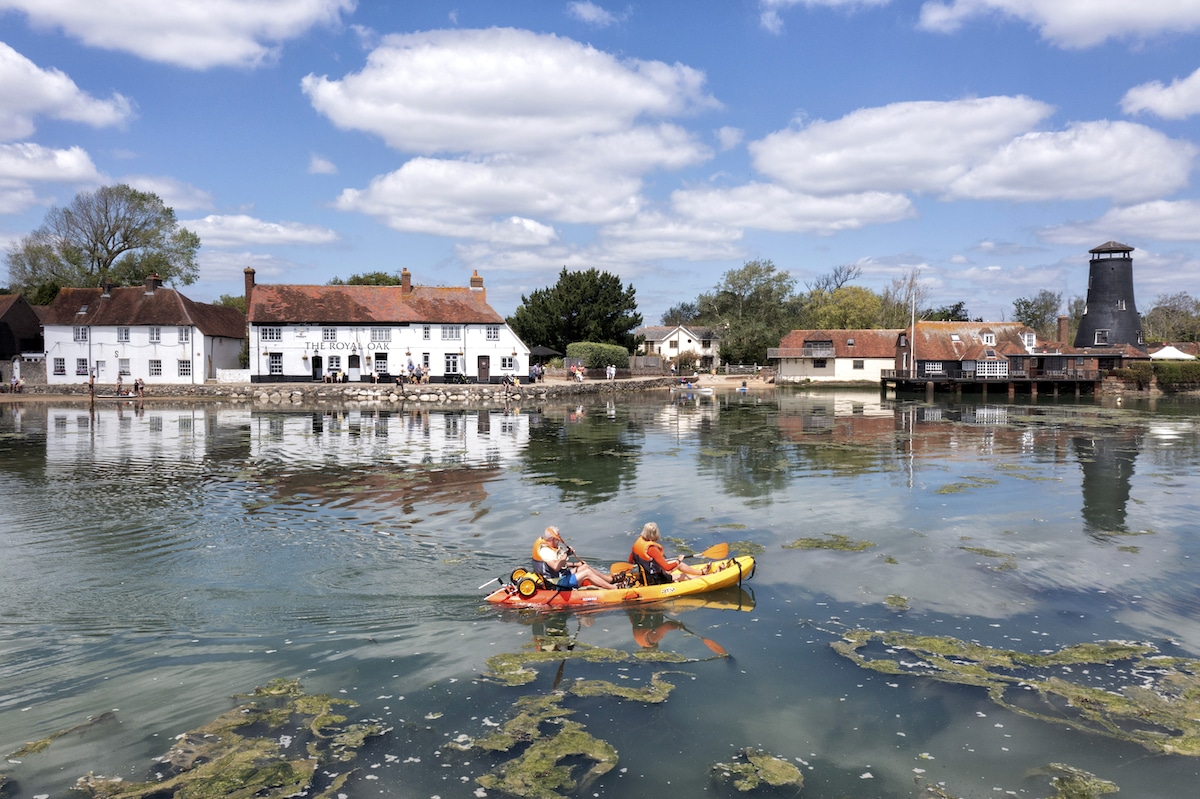High Levels of Drugs, Chemicals Found in Waters Off Southern England

 Why you can trust us
Why you can trust us
Founded in 2005 as an Ohio-based environmental newspaper, EcoWatch is a digital platform dedicated to publishing quality, science-based content on environmental issues, causes, and solutions.
In a new study, scientists have identified high levels of chemicals in the sea off the southern coasts of England. The chemicals include drugs that could be harming marine life.
The Clean Harbours Partnership, along with Portsmouth University, Brunel University and local interest groups, collected hundreds of samples along the coasts of Hampshire and West Sussex in England.
An analysis of 288 of the samples from 22 sites found more than 50 different compounds, including antidepressants, medications for type 2 diabetes, other pharmaceuticals and recreational drugs.
“This project is enabling us to determine what chemical contaminants are in our marine life and coastal waters. We have found a large variety of prescribed and illegal drugs plus a variety of pesticides in coastal waters and marine organisms, such as crabs and oysters,” Alex Ford, professor at the University of Portsmouth’s School of Biological Sciences, said in a statement. “This is important, because we know that aquatic ecosystems are under threat from pharmaceuticals and farming practices such as biocides and fertilizers.”
Ford has conducted previous research that found that even small amounts of antidepressants can impact crustaceans and molluscs, changing how they grow and reproduce.
“There is a staggering list of prescription drugs passed from humans to wastewater treatment plants and into receiving streams, estuaries, or oceans by direct consumption, metabolism, and excretion or by toilet flushing of old prescriptions,” Ford said. “The release of human pharmaceuticals into aquatic ecosystems is an environmental problem we should consider seriously.”
The analysis also found pesticides, such as simazine, propamocarb and imidacloprid in the water samples. Clothianidin, a banned neonicotinoid in the UK, was also found in the samples. Additionally, researchers found E. coli from a sea water sample collected after a storm at levels 760 times higher than the levels recommended as safe by the European Bathing Water Directive.
Next, the scientists will compare the samples collected during a drought last year to samples collected in the same locations after rainfall during combined sewer overflow (CSO) discharges. Ultimately, they hope to discover how these chemicals are impacting the coasts and wildlife to help encourage changes.
“The sheer scale of sewage discharges into our water courses has shocked the public,” Rob Bailey, co-founder of Clean Harbours Partnership, said in a statement. “It looks like the debate is set to continue as we learn what’s in the water and how ineffective the authorities have been at managing such obvious threats to our precious environment.”
Subscribe to get exclusive updates in our daily newsletter!
By signing up, you agree to the Terms of Use and Privacy Policy & to receive electronic communications from EcoWatch Media Group, which may include marketing promotions, advertisements and sponsored content.

 233k
233k  41k
41k  Subscribe
Subscribe 



